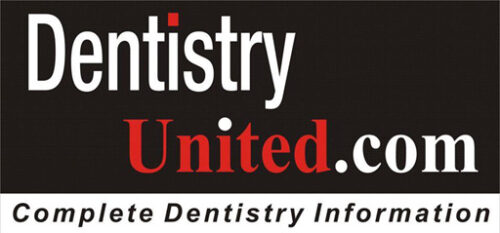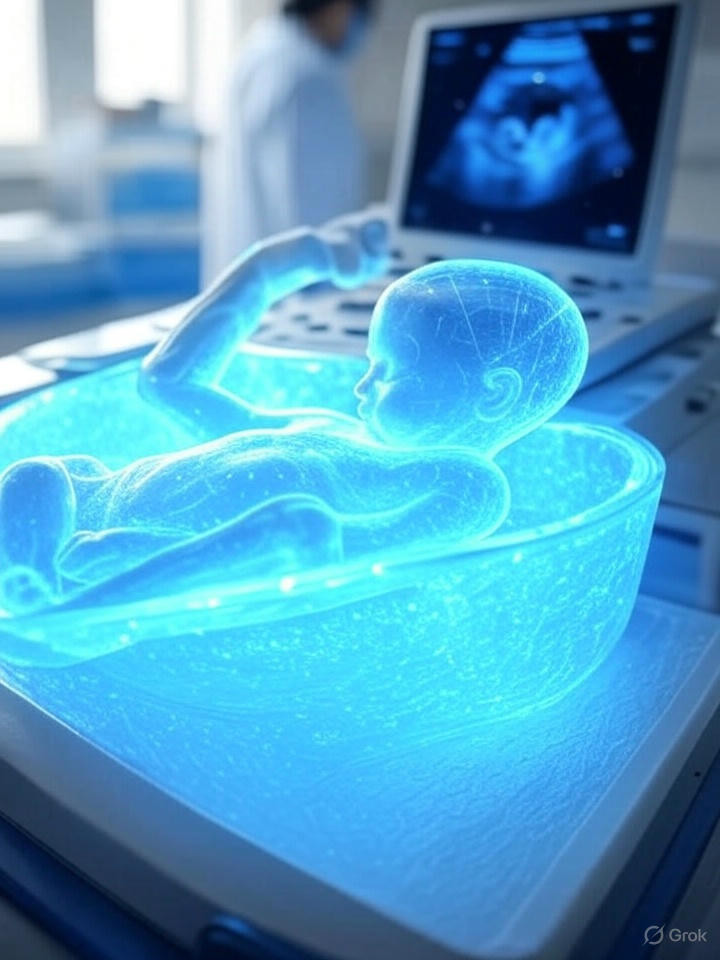By the DentistryUnited Newsdesk
In a groundbreaking leap for regenerative dentistry, researchers at the California Institute of Technology have unveiled Deep Tissue In Vivo Sound Printing (DISP), a non-invasive 3D printing technique that uses ultrasound to create precise hydrogel structures inside the body. This innovation, detailed in a recent Science publication, could redefine maxillofacial reconstruction by enabling targeted tissue regeneration and drug delivery without surgical intervention. For dentists and oral surgeons, DISP offers a promising tool to address the unique challenges of the maxillofacial region, where precision and minimal invasiveness are paramount.
How DISP Works: A Dental Perspective
DISP employs a specialized bioink—a liquid blend of polymers, temperature-sensitive liposomes containing crosslinking agents, and gas vesicles for imaging. After injection, focused ultrasound waves heat the target area by about 5°C, triggering the bioink to solidify into a hydrogel scaffold. Real-time ultrasound imaging ensures pinpoint accuracy, even in complex anatomical zones like the maxillofacial region. Unlike traditional bioprinting, which requires surgical access, DISP’s non-invasive approach minimizes trauma, making it ideal for delicate oral and facial tissues.
Why It Matters for Maxillofacial Dentistry
The maxillofacial region—encompassing the mandible, maxilla, temporomandibular joint, and surrounding soft tissues—poses distinct challenges due to its functional and aesthetic demands. Conventional treatments for defects from trauma, cancer resection, or congenital anomalies often involve invasive surgeries, risking scarring, nerve damage, or prolonged recovery. DISP could change this paradigm by enabling dentists to print bioactive scaffolds directly within bone or soft tissue to repair mandibular fractures, regenerate periodontal tissues, or deliver localized therapies for oral cancers. For example, printing doxorubicin-loaded hydrogels could target squamous cell carcinomas in the oral cavity with unprecedented precision, reducing systemic side effects.
Moreover, DISP’s ability to create bioadhesive gels could revolutionize mucosal repair in cases of severe gingival recession or post-surgical defects. Its potential to print conductive bioinks also opens doors for embedding sensors to monitor healing in real time, a boon for temporomandibular joint disorders where diagnostics are often challenging.
Preclinical Promise
Caltech’s trials, conducted on mice and rabbits, highlight DISP’s potential. In mice with bladder tumors, printed chemotherapy-loaded hydrogels outperformed direct drug injections in killing cancer cells. In rabbits, tissue constructs were printed 4 cm deep in muscle tissue, with no toxicity and natural clearance of excess bioink within a week. These findings suggest DISP could safely target deep maxillofacial structures like the mandibular ramus or pterygoid muscles, areas notoriously difficult to access without invasive procedures.
A Vision for the Future
The Caltech team, led by Wei Gao and Elham Davoodi, is exploring AI integration to enhance DISP’s precision, potentially allowing it to adapt to the dynamic movements of maxillofacial muscles during speech or mastication. Imagine a future where a dentist could inject bioink into a patient’s jaw, use ultrasound to print a scaffold for bone regeneration, and monitor progress via embedded biosensors—all in a single, outpatient procedure. This could be a game-changer for rural clinics or high-risk patients where surgical resources are limited.
Hurdles to Overcome
DISP is not yet ready for clinical use. The maxillofacial region’s dense bone, varied soft tissue, and proximity to critical nerves require further testing to ensure ultrasound waves can navigate these complexities without collateral damage. Larger animal studies are needed to validate scalability, particularly for human craniofacial anatomy. Dentists will also need training to integrate ultrasound-guided bioprinting into practice, a hurdle that professional societies could address through specialized workshops.
A New Frontier for Dentistry
DISP represents a seismic shift for maxillofacial dentistry, blending cutting-edge technology with the precision demanded by oral health professionals. By eliminating the need for invasive surgery, it promises faster recoveries, reduced complications, and enhanced outcomes for patients with complex craniofacial needs. As research progresses, DentistryUnited will keep a close eye on DISP’s journey from lab to dental chair, heralding a new era of regenerative care.
Reference: Davoodi, E., et al. Deep tissue in vivo sound printing for programmable therapeutics. Science 388, 456–464 (2025). Available at: https://www.caltech.edu/about/news/ultrasound-printing

